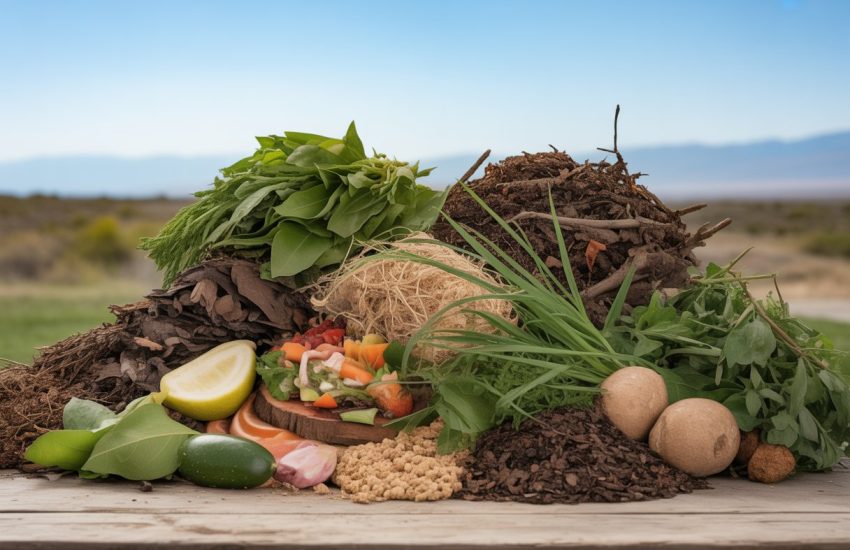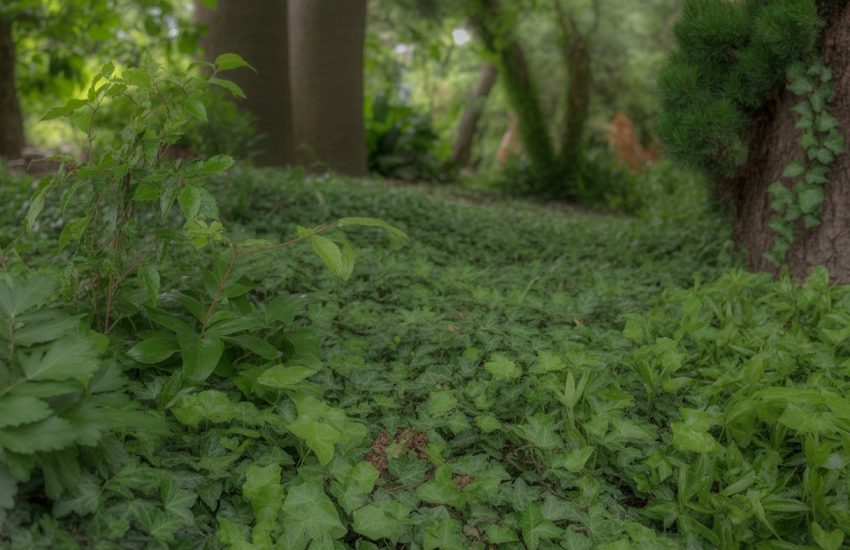Care of Kalanchoe Plant: Tips for Keeping Your Plant Healthy and Thriving
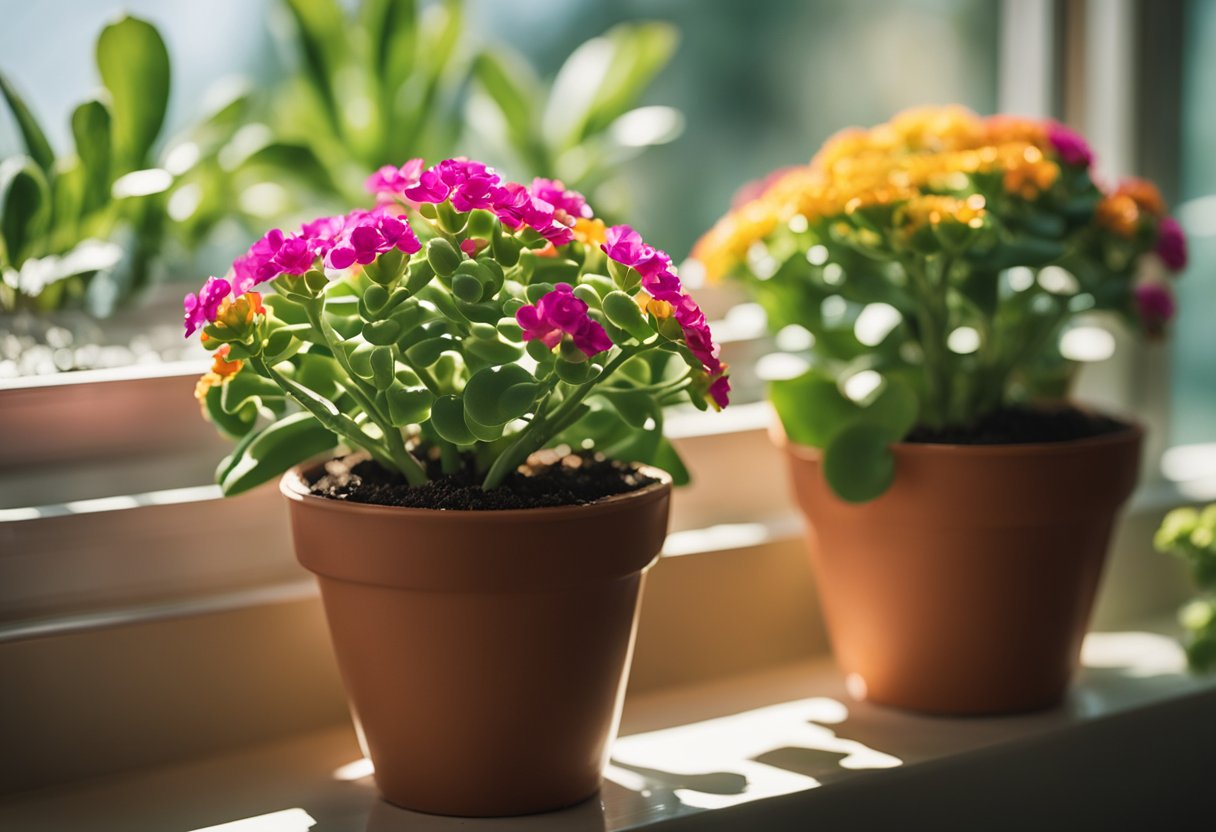
Kalanchoe is a popular houseplant known for its attractive foliage and vibrant flowers. This succulent plant is easy to care for and can thrive in a variety of environments, making it a great choice for both novice and experienced gardeners. In this article, we will explore the care of kalanchoe plant and provide tips on how to keep your plant healthy and blooming.
One of the key aspects of caring for kalanchoe is providing the right growing conditions. This plant prefers bright, indirect light and well-draining soil. Overwatering can be a common issue with kalanchoe, so it is important to allow the soil to dry out between waterings. Fertilizing the plant during its active growing season can also help promote healthy growth and flowering.
In addition to proper growing conditions, kalanchoe requires regular maintenance to keep it looking its best. This includes removing spent flowers and damaged leaves, as well as periodically pruning the plant to encourage bushier growth. With the right care, your kalanchoe plant can provide months of beautiful blooms and foliage.
Understanding Kalanchoe
Botanical Profile
Kalanchoe is a genus of flowering plants that belongs to the Crassulaceae family. It is native to Madagascar and tropical Africa, but it is now widely cultivated around the world. The most popular species is Kalanchoe blossfeldiana, also known as Flaming Katy, which is prized for its colorful blooms and ease of care.
Kalanchoe plants are succulents with thick, fleshy leaves that store water. They come in a variety of shapes and sizes, including the paddle plant, panda plant, and Kalanchoe pinnata. The leaves of some species, such as Kalanchoe thyrsiflora, can turn a vibrant red or orange when exposed to sunlight.
Varieties and Species
There are over 100 species of Kalanchoe, each with its own unique characteristics. Some popular varieties include:
- Kalanchoe blossfeldiana: This is the most commonly grown species, known for its bright, long-lasting blooms in shades of red, pink, orange, yellow, and white.
- Kalanchoe pinnata: Also known as the “miracle leaf,” this species is used in traditional medicine to treat a variety of ailments.
- Kalanchoe thyrsiflora: This species is commonly known as the “flapjack plant” or “paddle plant” due to its thick, round leaves that resemble pancakes.
Overall, Kalanchoe plants are easy to care for and make great additions to any indoor or outdoor garden. With the right conditions and a little bit of attention, they can thrive and provide beautiful blooms year-round.
Optimal Growing Conditions
Light Requirements
Kalanchoe plants prefer bright sunlight, but they can also thrive in partial shade. If grown indoors, they should be placed near a west or south-facing window to receive adequate light exposure. If grown outdoors, they should be placed in an area that receives bright sunlight for at least 6 hours a day.
Soil Composition
Kalanchoe plants require well-draining soil to prevent root rot. A low-maintenance potting mix that contains peat moss and perlite is ideal for these plants. The soil pH should be between 6.0 and 7.0.
Watering Schedule
It is important not to overwater kalanchoe plants as they are succulents and store water in their leaves. Watering should be done only when the soil is dry to the touch. The frequency of watering will depend on the temperature and humidity of the environment.
Temperature and Humidity
Kalanchoe plants prefer temperatures between 60°F and 85°F. They can tolerate temperatures as low as 50°F and as high as 90°F. These plants can also tolerate low humidity levels, but they will thrive in environments with moderate to high humidity.
In summary, kalanchoe plants require bright sunlight, well-draining soil, and moderate watering. They can tolerate a wide range of temperatures and humidity levels, making them a great addition to any indoor or outdoor garden.
Planting and Repotting
Initial Potting
When potting a kalanchoe plant for the first time, it is important to choose a container that is slightly larger than the plant’s root system. The pot should have drainage holes to prevent water from accumulating at the bottom and causing root rot. A clay pot is an excellent choice as it allows for air circulation and helps to prevent overwatering.
The potting mix should be well-draining and sandy, as kalanchoe plants prefer soil that is not too wet. A succulent mix can be used as it contains the necessary nutrients and provides good drainage. Fill the pot with the potting mix and create a small hole in the center for the plant.
When to Repot
Kalanchoe plants should be repotted every 1-2 years, or when the plant has outgrown its current container. Signs that a plant needs to be repotted include roots growing out of the drainage holes, the soil becoming compacted, or the plant becoming top-heavy.
The best time to repot a kalanchoe plant is in the spring when it is actively growing. Repotting during this time will minimize stress on the plant and allow it to quickly establish itself in its new container.
Choosing the Right Container
When choosing a new container for a kalanchoe plant, it is important to select one that is only slightly larger than the current container. A pot that is too large can lead to overwatering and root rot.
A clay pot is an excellent choice as it allows for air circulation and helps to prevent overwatering. If using a plastic pot, be sure it has drainage holes to prevent water from accumulating at the bottom.
In summary, when initially potting a kalanchoe plant, choose a container that is slightly larger than the root system and use a well-draining, sandy soil mix. Repot the plant every 1-2 years or when it has outgrown its current container, and choose a new container that is only slightly larger than the current one to prevent overwatering.
Propagation Techniques
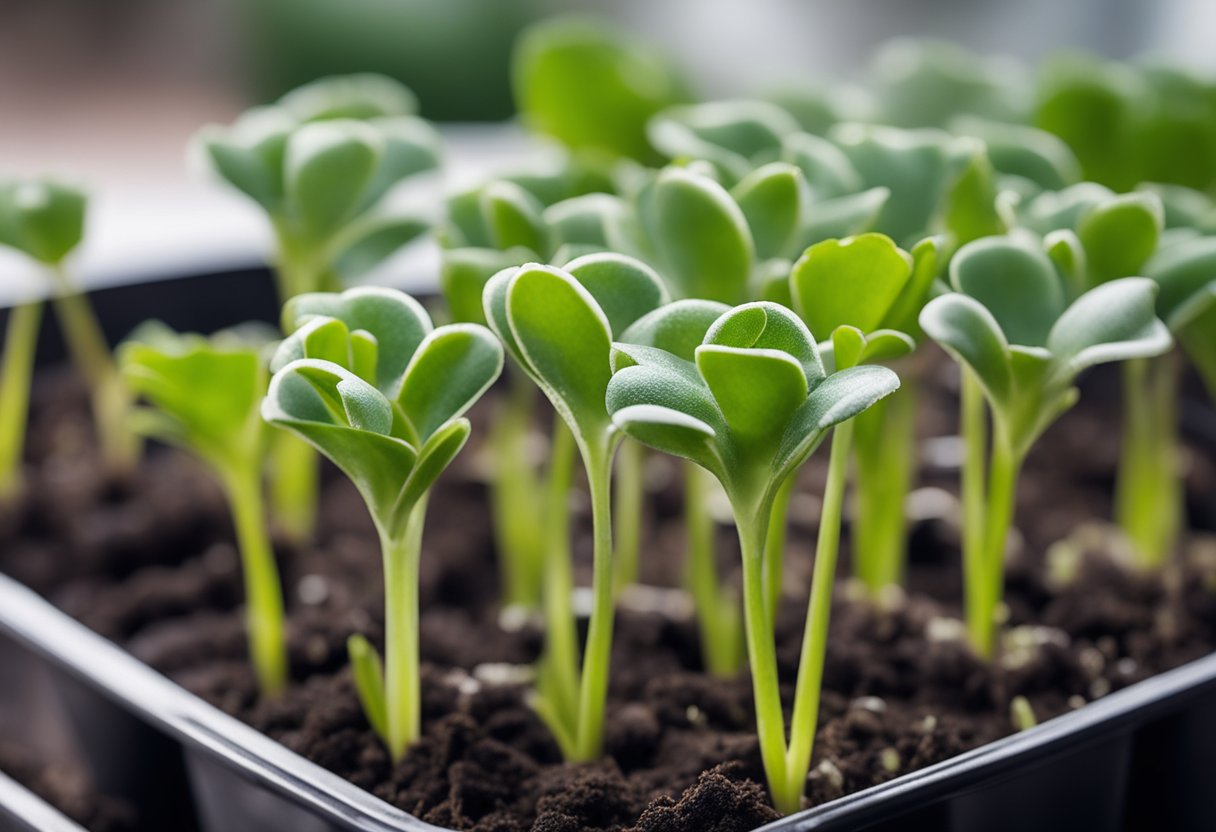
Kalanchoe plants are relatively easy to propagate. There are three main ways to propagate kalanchoe: using stem cuttings, leaf cuttings and plantlets, and growing from seeds.
Using Stem Cuttings
Stem cuttings are the most common method of propagating kalanchoe plants. The best time to take stem cuttings is in the spring or summer. To propagate kalanchoe using stem cuttings, follow these steps:
- Cut a stem from the parent plant that is at least 3 inches long and has a few leaves.
- Remove the leaves from the bottom of the stem.
- Dip the cut end of the stem in rooting hormone.
- Plant the stem in a well-draining soil mix.
- Water the soil and keep it moist but not wet.
- Place the pot in a warm, bright location but out of direct sunlight.
Leaf Cuttings and Plantlets
Leaf cuttings and plantlets are another way to propagate kalanchoe plants. This method is best used for plants that produce plantlets on their leaves. To propagate kalanchoe using leaf cuttings and plantlets, follow these steps:
- Cut a leaf from the parent plant that has a plantlet attached.
- Plant the leaf in a well-draining soil mix.
- Water the soil and keep it moist but not wet.
- Place the pot in a warm, bright location but out of direct sunlight.
Growing from Seeds
Growing kalanchoe from seeds is possible but not as common as using stem or leaf cuttings. To propagate kalanchoe using seeds, follow these steps:
- Sow the seeds in a well-draining soil mix.
- Water the soil and keep it moist but not wet.
- Place the pot in a warm, bright location but out of direct sunlight.
- Germination can take up to two weeks.
Overall, propagation is an easy and cost-effective way to expand your kalanchoe collection. With proper care and propagation techniques, you can enjoy these beautiful plants for years to come.
Routine Care and Maintenance
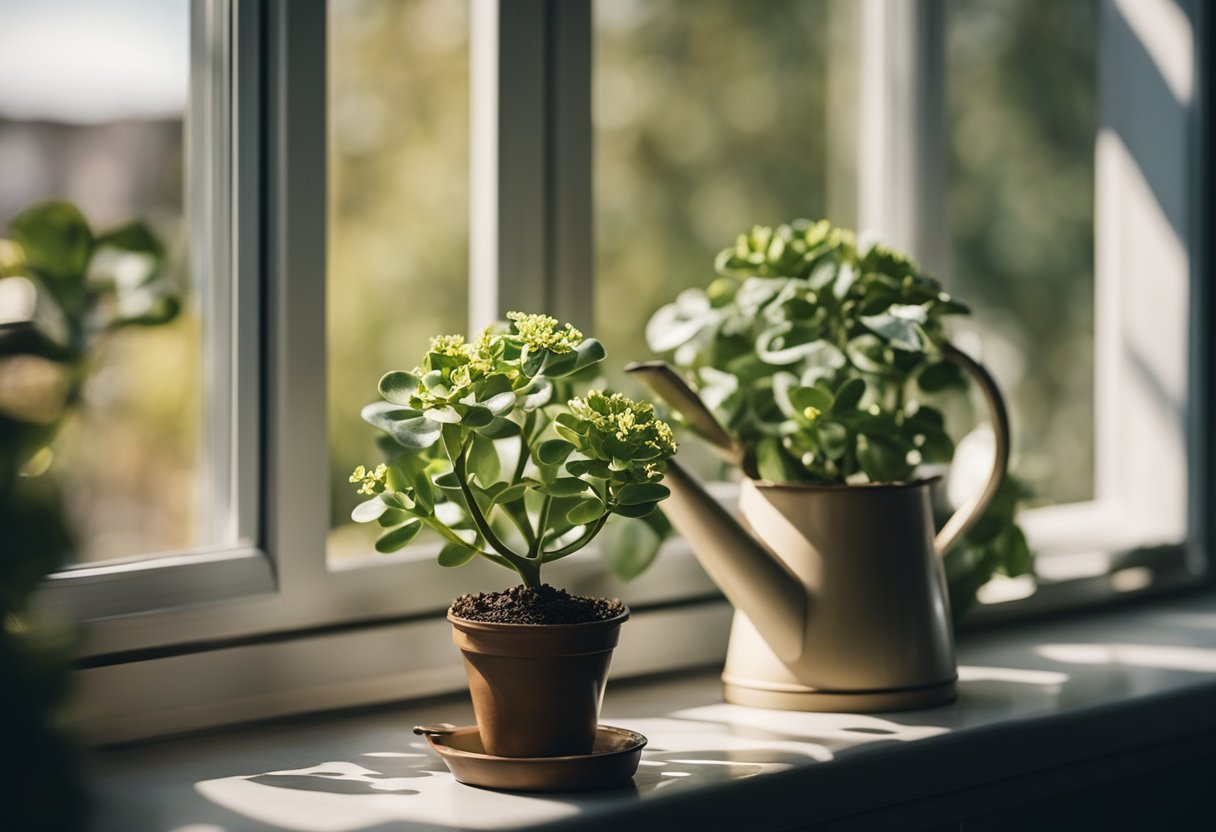
Kalanchoe plants are relatively easy to care for and maintain, making them a popular choice for indoor and outdoor gardening. Proper routine care and maintenance can help ensure that your kalanchoe plant thrives and produces beautiful blooms year-round.
Fertilizing for Healthy Growth
Fertilizing is an essential part of kalanchoe care. These plants require regular feeding to promote healthy growth and flowering. It is recommended to fertilize kalanchoe plants every two weeks during the growing season, using a balanced houseplant food. Be sure to follow the manufacturer’s instructions for the correct dosage.
Pruning and Deadheading
Pruning and deadheading are important tasks for maintaining the health and appearance of your kalanchoe plant. Regular pruning can help control the size and shape of the plant, while deadheading promotes the growth of new blooms. Use sharp, clean pruning shears to remove any dead or damaged leaves and flowers.
Pest and Disease Management
Kalanchoe plants are generally hardy and disease-resistant, but they can still fall victim to pests and diseases. Common pests include mealybugs, spider mites, and scale insects, which can be treated with a mild insecticide or by wiping the affected areas with a cotton swab dipped in rubbing alcohol. Diseases such as root rot and powdery mildew can be prevented by ensuring the plant is grown in well-drained soil and not overwatered. If a disease is suspected, remove any affected leaves or flowers and treat with a fungicide if necessary.
In summary, routine care and maintenance of kalanchoe plants involves regular fertilizing, pruning, and pest and disease management. By following these simple steps, your kalanchoe plant can thrive and produce beautiful blooms for years to come.
Encouraging Blooms
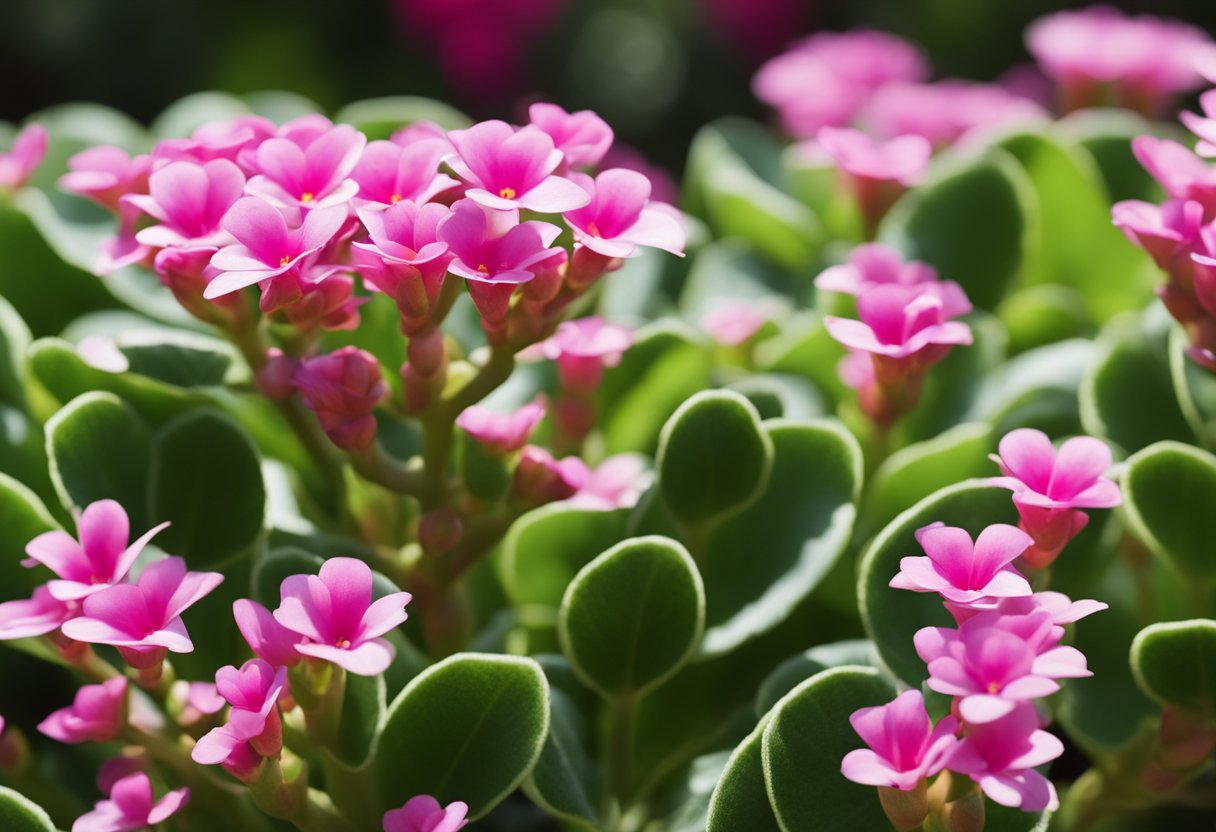
Understanding the Bloom Cycle
Kalanchoe plants are known for their long-lasting blooms and colorful flowers. Understanding the bloom cycle of these plants can help in promoting flowering. Kalanchoe plants typically bloom during the winter months, making them a popular choice as a Christmas plant. The bloom period can last for several weeks, and the flowers can be found in a range of colors, including pink, red, orange, and yellow.
Promoting Flowering
To promote flowering in kalanchoe plants, it is important to provide them with the right conditions. These plants prefer a bright, sunny spot with well-draining soil. They also require a period of darkness to encourage blooming. It is recommended to provide them with 12-14 hours of darkness per day for 6 weeks before the desired bloom period.
In addition to the right light and darkness conditions, kalanchoe plants also require proper nutrition. Phosphorus is essential for promoting flowering in these plants. Fertilize the plant with a phosphorus-rich fertilizer every two weeks during the blooming period.
After Bloom Care
Once the blooming period is over, it is important to care for the plant properly to encourage future blooms. Deadhead the spent blooms to promote new growth and encourage the plant to produce more flowers. It is also recommended to prune the plant back by one-third after the blooming period to promote bushier growth and more blooms in the future.
In conclusion, encouraging blooms in kalanchoe plants requires the right light and darkness conditions, proper nutrition, and after-bloom care. By following these simple steps, you can enjoy beautiful and long-lasting blooms from your kalanchoe plant.
Frequently Asked Questions
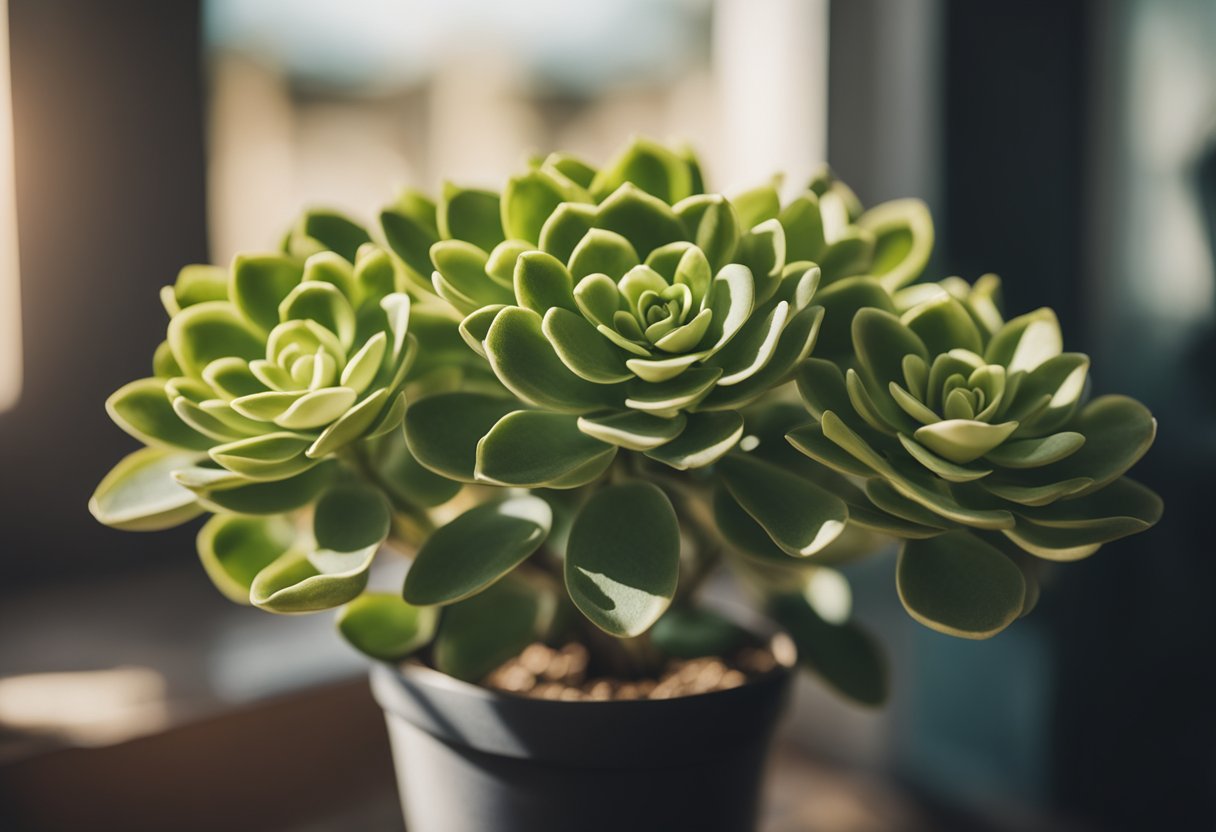
What are the optimal lighting conditions for a kalanchoe plant?
Kalanchoe plants prefer bright, indirect sunlight. They can also tolerate some direct sunlight, but too much can cause the leaves to burn. If the plant is not receiving enough light, it may not bloom.
How often should a kalanchoe be watered?
Kalanchoe plants should be watered when the top inch of soil feels dry to the touch. Overwatering can lead to root rot, so it’s important not to let the plant sit in water. In general, it’s better to underwater than to overwater a kalanchoe.
What steps are involved in propagating a kalanchoe from a leaf?
To propagate a kalanchoe from a leaf, gently remove a healthy leaf from the plant and let it dry for a day or two. Then, dip the cut end of the leaf in rooting hormone and plant it in a well-draining potting mix. Keep the soil moist but not waterlogged, and the new plant should start to grow in a few weeks.
How can you encourage a kalanchoe to bloom repeatedly?
To encourage a kalanchoe to bloom repeatedly, it’s important to provide it with the right conditions. This includes bright, indirect sunlight, well-draining soil, and proper watering. After the plant has finished blooming, cut back the stems to encourage new growth and future blooms.
What are the specific care requirements for pink and yellow kalanchoe varieties?
Pink and yellow kalanchoe varieties have the same basic care requirements as other kalanchoe plants. However, they may be more sensitive to overwatering and direct sunlight. It’s also important to note that the color of the flowers may fade if the plant is not receiving enough light.
What are the benefits of having a kalanchoe as an indoor plant?
Kalanchoe plants are popular indoor plants because they are easy to care for and produce bright, colorful flowers. They also help to purify the air and can add a pop of color to any room.

